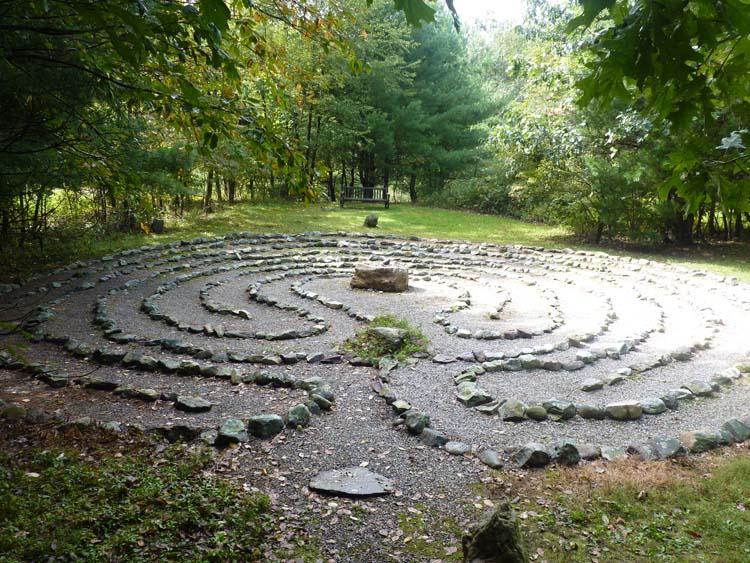
Druidry today has both ancient and modern roots, and there have been several distinct “phases” of druid practice historically. While it’s not critical that the practitioner of the modern druid traditions know what I share, it is helpful to have a sense of where the tradition comes from and the forces that shaped it–particularly so that we can think about where we are going. I want to talk today about both the past of druidry in order that we might talk about its future. How do we shape our tradition today so that we become the honored ancestors of tomorrow? What is the work that we might consider doing now, as druids, to create a tradition that endures?
Modern druidry is inspired by the Ancient Druids, a group of wise sages who kept history, traditions, and guided the spiritual life of their people. The Ancient Druids lived in areas of Britain and Gaul (modern-day France) as well as in other parts of Europe; the earliest records of the Ancient Druids start around 300 BCE and go about the second century CE, when they were wiped out by the Romans. The ancient Druids had three branches of study: the bard (a keeper of history, stories, and songs), the ovate (a sage of nature or shaman), and the druid (the keeper of the traditions, leader of spiritual practices, and keeper of the law). Much of what we know about the Ancient Druids today comes through their surviving legends, stories, mythology, and the writings of Roman authors. The druids themselves had a prohibition against writing anything down that was sacred, and so, we have only fragments of what their tradition looked like. But fragments cannot be a full spiritual tradition.
Centuries later, at a time when industrialization began to rise in the in the British Isles in 18th century, a new group of people in the British Isles became interested in the Ancient Druids. Modern Druidry’s spiritual ancestors watched as the wheels of industrialization radically and irrevocably changed the landscape: the land stripped of her resources for industrialization and progress; the growing emphasis on produced goods over communities; deforestation and pollution becoming commonplace; and the relegating of humans, animals, and the land to that of a machine. Modern druidry’s spiritual ancestors began to shape a new druid tradition, inspired by the ancient druids, and beginning with the fragments that had been left behind by the ancients: texts and stone circles alike. The Druid Revivalists reached deeply and creatively into history to return to an earlier time where humans and nature were connected. The Druid Revival movement, therefore, sought to reconnect with nature through ancient and ancestral roots in a time where the broader wheels of industrialization was pushing humans into a very different kind—and ultimately destructive—relationship with nature. It is for this same reason that people today are drawn to the modern druid tradition–there is “something” missing for them and what is missing is often rooted in that lack of connection with the living earth. (Note: This discussion of the rise of modern druidry is heavily influenced by the work of John Michael Greer in the Druidry Handbook.
It is in this perpetual seeking of reconnection that we can see how druidry is a very human response to the larger wheels of industrialization that have been thrust upon most of us in the Western world. Despite the early promise of industrialization and, later, consumerism, we are now living in a world on the brink of ecological collapse. Many of us recognize that we must make a different way forward, and druidry offers one such way. For over 300 years, the ancient druids have offered modern people sources of inspiration and reconnection. The ecological crisis is a spiritual crisis as much as it is a crisis of culture. Druidry, then, is helping us find our way “home.”
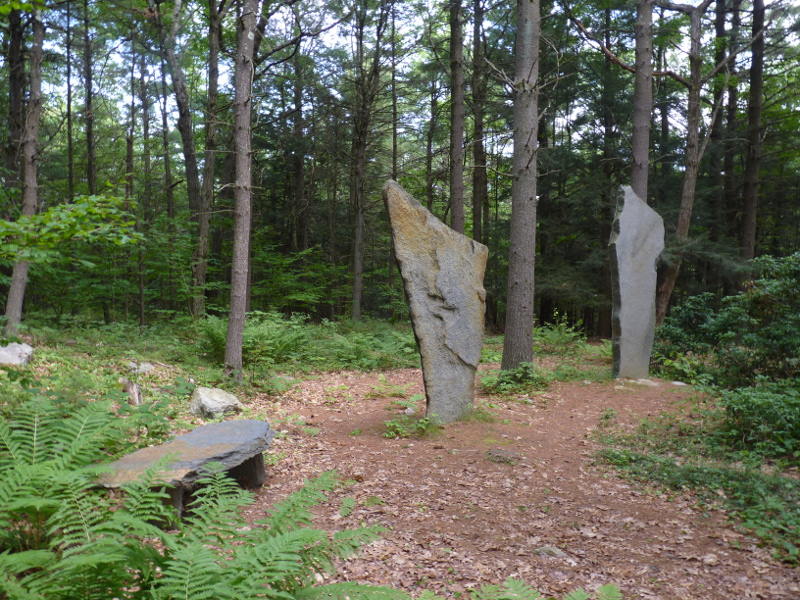
Sharing historically where the druid tradition came from helps us get to what I see as the core of druidry today: focusing on what an ecologically-centered, wildcrafted, localized and living druidry today can look like, how it can help us reconnect, and how it offers us spiritual and practical tools for responding—and taking care of ourselves and the living earth—during the ecological crisis of our age.
Descending in spirit from the Ancient Druids and descending in principle from the druid revival several centuries ago, the Druid tradition in the 21st century is shaping up to be a vibrant one that focuses both on drawing deeply from the past but also creating a living tradition, and evolving tradition, that meets the needs of both druids and the earth today. I really want to push us to deepen and extend druid practices and the druid tradition—not by eliminating or removing pieces from the existing tradition, but building upon it.
Druidry, as a tradition in its current form (that is, as a path of nature spirituality) has been around less than two centuries. Many druids are scattered around the world, being in small groups or always as solo practitioners. Communities of druids are formalizing, expanding, and establishing their own traditions and paths, rooted in the frameworks of the druid revival tradition.
Druidry is a language that we are starting—only now—to learn how to speak. The metaphor of how a new language is formed is a helpful metaphor in terms of the druid tradition. New languages often form from what is known as a “contact zone.” This is when two established languages come into contact (say, through trade, resettlement, or colonialization) and speakers of each language intermingle and have to figure out how to communicate. What initially forms is what linguists call a “pidgin” language, a language with limited vocabulary from both languages, simplified grammar (usually borrowed from one of the languages, often the dominant one), and limited ways of communicating. This is not anyone’s native language, but something created out of a basic need to communicate. In time, typically a generation or two, the pidgin language becomes a creole language. This happens when children are born hearing the language and acquire it as native speakers. These new native speakers help shape the pidgin language beyond its initial simplified form with more elaborate grammatical structures that can allow for more complex meaning, a richer vocabulary, and so on. Eventually, given enough time, the creole language becomes its own language that is distinct and fully independent from either the parent languages.
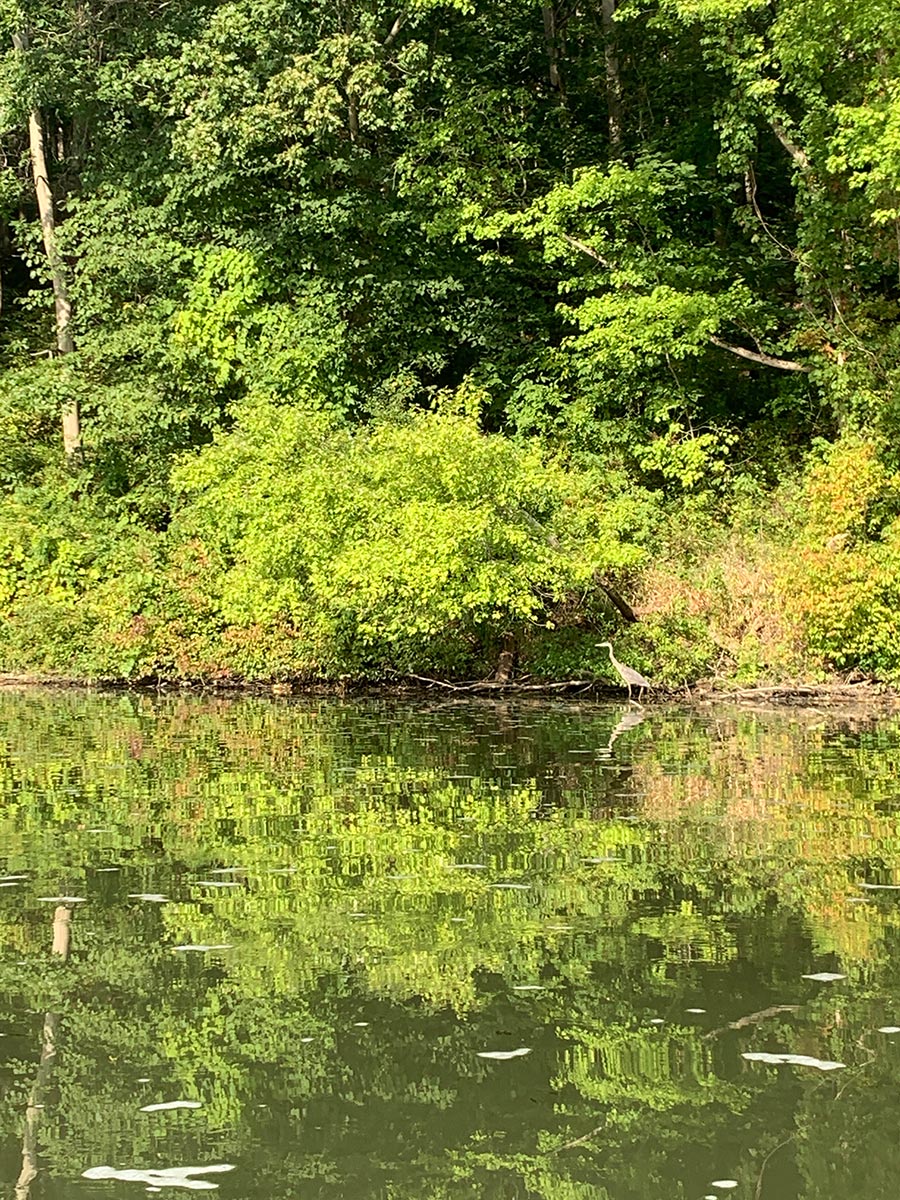
Many of us are speaking druidry as a pidgin language—we began to walk this path within a contact zone of other dominant religions and childhood religions that have shaped our thinking, reactions, and beliefs. And the basic forms of druidry, like those published in many pioneering books and early curricula from this tradition, helped us get the job done as we developed our unique nature spirituality. These included basic practices like connecting with nature, celebrating the seasons, practicing the bardic arts, working with spirit. But as we grow into our own druidry, both as individuals and as communities, the kinds of material and practices becoming part of this tradition are expanding considerably.
I believe that druidry as a community is in the place of transitioning from a pidgin to a creole language. As more and more people find our tradition and practice it seriously, and as children begin to be born into and grow up in this tradition, as we are increasingly surrounded by groves and communities, we are able to fully develop and expand various parts of the druid tradition to fit these expanded needs. I’ve witnessed this here in the United States on the East Coast, for example, with tremendous growth not only in the number of druid gatherings per year and number of people wanting to attend, but also the kinds of activities we now do at gatherings: community building, coming of age ceremonies, bardic competitions, croning, and saging rituals, the development of permanent sacred spaces and the creation of widespread energetic networks, and more. Our language of druidry is expanding, and each new voice and perspective has much to offer.
So then, how might we “expand” the language of druidry? I think every single person on this path, from those new to those who have been walking it for a long time has the opportunity to do so. Here are some of the ways we might engage in this practice:
1. Develop and Share Wildcrafted and Localized Druidries. While druidry originated in the British Isles, there are more people who practice druidry worldwide and here in North America than ever before. While I think we should see the British Isles as part of the wisdom and background, it is part of that original contact zone language for those of us who are not in the British Isles. We will certainly be inspired by the mythology, sacred sites, and spiritual practices–but we must embrace the idea of creating something new that is specifically adapted to where we are rooted today. For those who don’t live in the British Isles, it is very important to develop locally-based and wildcrafted practices. The Ancient Order of Druids in America is very committed to a wildcrafted druidry path and has an entire curriculum built around wildcrafted druidry as a core principle. Through learning about ecology, planting trees, spending time in nature, and exploring nature through the bardic, ovate, and druid arts, druids get a deeper sense of place and are able to thus, create a wildcrafted druidry that fits their own immediate ecosystem.
Once you have developed these approaches to druidry, I really want to encourage you to share them. Put that information out there in the world so that others who live in similar bioregions can learn localized practices. If you’ve read my blog for a while, you know that’s a lot of what I’m doing here–my Sacred Trees in the Americas series, the Allegheny Ogham, how to make Tree Incenses, Acorn Flour, Tree Wassailing, so many more pieces–these are all pieces of localized druidry that I have developed while living in both the US Midwest and the US Mid-Atlantic regions. If these pieces help others, the tradition becomes richer and more robust.
2. Put tired debates of authenticity behind us and instead focus on today and tomorrow. Perhaps this is my revival druid path bias showing, but I am growing very tired of talking about authenticity. I don’t think it moves our tradition forward in any meaningful way, and I think it is disrespectful to our direct spiritual ancestors. Yes, a lot of the early druid revival works and authors have been discredited for taking liberties and creating texts; I find these attempts to discredit them problematic for several reasons, particularly for those who practice druidry. First, they were working within the bounds of acceptable practice within their own age, not ours. This was an age where forgery and plagiarism of texts were common. Second, the practices of the druid revival tradition work—as attested by tens of thousands of druids worldwide. If it works, obviously, it was inspired. Third, at this point, some druid revival texts, such as Iolo Morganwg’s Barddas, have considerably shaped our tradition for several centuries. And finally, regardless of some of their practices, the Druid Revivalists as a group had an enormous impact in a wide range of fields including modern archeology, poetry, culture, and certainly, nature spirituality. We have fragments from the ancients, and we have a rich history from the revival–both of those shape who we are today. But it is modern practitioners–you and I–shape who we are tomorrow. So I suggest we set aside these discussions, acknowledge that the practices work, and think about what we are doing today–and how we can move into a better tomorrow.

4. Focus on being a good ancestor. It strikes me that in the age of the present predicament we face, one of the most important things we can do is live today in a way that makes us good ancestors. What can we do today–spiritually, physically, socially, creatively–to create a better world than the one we live in? That preserves the diversity of life on this planet? That helps humans reconnect with the living earth? These are the kinds of questions that I find really important now, both for my own practice and in the mentoring and support that I offer those in the AODA and broader druid community. Druidry offers an alternative perspective to the dominant narratives that are currently killing our planet. It is important that concepts like nature spirituality are rooted firmly now so that these ideas may flourish beyond our own lives.
5. Create refugia and regenerate ecosystems. As I’ve discussed before on this blog, there are physical and metaphysical practices we can do now, given the challenges we face as a world. One of the most powerful we can do is preserve small pockets of life and foster ecosystems in any way we can. Refugia are how so many species–including humans–survived the last ice age. Small pockets of abundant life not only support the many species on this planet (birds, insects, mammals, reptiles, amphibians, etc) but also offer humans places to deepen their connection to nature. You can learn more about how to create a refugia or one example of a refugia here. Another method that is extremely empowering is learning and practicing permaculture design. These approaches allow us to do more than honor nature or work with it metaphysically, but be a force of good right now, today, and a champion of all life.
6. Practice resilience. If events of the last year have taught us anything, it is that the concept of resilience is going to be a critical skill in the years and decades to come. Resilience is a term I first learned as a permaculture practitioner–resilient ecosystems were those that are able to withstand hardship, recover quickly when faced with difficulty, and had a capacity to endure. This same concept, I believe, is central to any spiritual work we do. We need to become both physically and spiritually resilient so that we can continue to face the difficulties that will only grow in seriousness as we live our lives and continue to walk our spiritual paths.
But resilience isn’t easy–it is a process. I would argue that it requires both inner and outer work. On the inner side, resilience requires us to adapt, be flexible, and be brave. Practicing resilience requires us to privilege our own self-care, put things in perspective, and continue to work through our own feelings. It requires us to understand our own fears, weaknesses, and shadow selves. Resilence in our physical lives is something that, thankfully, many more people are attending to now than they were a year ago. It means being better prepared for things that may occur that are unprecedented (like global pandemics or food shortages). Physical resilience is about having your basic hierarchy of needs met, even in a time of disruption. It is a good time to start growing some of your own food, look into food storage options like a root cellar and pantry, and make sure that you have a monthm at a minimum, of stores to meet your needs. Physical resilience is also about being flexible and opportunistic, almost like the understory trees I wrote about several weeks ago–learning how to be resourceful and adaptable. I would argue that resilience is a mindset that you can learn. Resilience is the great challenge of our age, and will allow us to face any other challenges with strength, wisdom, and peace. It will certainly help facilitate our work in other areas, and will allow us to thrive even in difficult conditions.
I think these are only some of the things we might do now to help us shape a better future for tomorrow. But I like to think along these lines, in a positive way, because that allows all of us to do good in the world and keep moving in peace, joy, and hope.
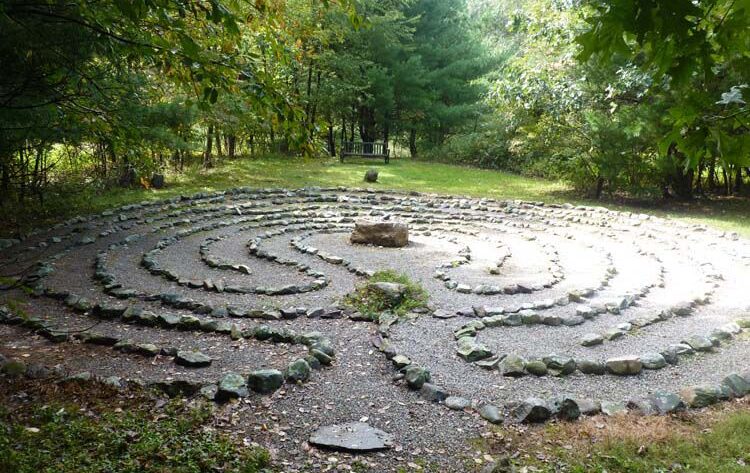

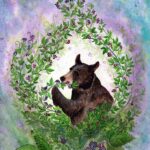

Reblogged this on Paths I Walk.
Love this! Is the book you mention in this post the best book you would recommend for beginning Druidry? I have considered myself a Green Witch for many years, but I believe I may want to walk the Druid path. I’m also in New England 🙂
OBOD is a wonderful Druid organization, and I still use JMG’s Handbook, even though I am part of ADF. They have a great system of teaching long distance. I would also recommend the Druid Magic Handbook, and his book A World Full of Gods. He also wrote one called Encyclopedia of Natural Magic, which might interest you. I also did Ann Moura’s Green Witchcraft path before going into Druidry; it is a natural progression.
Hi Alyssa,
Yes, all of those resources are wonderful. I’m both an OBOD druid as well as the current Grand Archdruid of the Ancient Order of Druids in America (taking over after JMG’s retirement from the position), so I am quite familiar with all of the works you share ;). Thank you for sharing and for your comment!
I recommend starting with the Druidry Handbook by John Michael Greer!
Reblogged this on Blue Dragon Journal.
Thank you for the reblog, Eliza!
Excellent blog Dana, while I always enjoy reading what you have to say, this one focuses the Druid path in a way I don’t see others discussing. I wonder at times if some of the greats we read now for inspiration realized that in some cases a thousand years later we would be arguing about what they actually meant. We forget as humans, that our own lives can be very finite and short. We can however have an impact on the greater whole in many different ways. This is what drew me to the path and one of the reasons I have stayed around. A living, breathing spirituality is needed for the things that seem to coming our way on this planet and a letting go of those that no longer serve us as one species of many on this planet.
OakM, thanks for your comment. I do hope I’m offering something different here. Its all about connection and regeneration of the living earth :). Thank you for reading and your comment!
I guess I’m a potential ovate. My idea of a day well spent is out puttering in the Douglas Fir and Garry Oak forest by our house, pulling ivy and digging Himalayan BlackBerry. Half aware that I’m muttering to the plants. Yesterday it was a big, old Oemleria (osoberry) strangled by a giant form of ivy that escaped from our yard decades ago. Cleaning up after the party of decorative, but useless gardening is how I see it. I’ve tidied up after a lot of wild nights having grown up in the 70s and 80s. So now I make my apologies and plant back what was taken, dug up and tossed over a hundred years ago; Sword fern, Twinberry, Black Hawthorne, Elderberry, honeysuckle, fawn lily, and more. Thanks for the article Dana. Once again, I’ve got a new perspective.
Hi Julia! It sounds like you are absolutely walking the Ovate path. Blessings to you and thank you for sharing!
“The ecological crisis is a spiritual crisis as much as it is a crisis of culture.”
This is so true. I swear I feel my soul shudder when I spot trash along the road or drive past one of those filthy fossil fuel plants or notice that a swath of trees I often drive past has been clear-cut.
Right? Its so hard to see all of this stuff happening. But we need to stay strong and work for the good of all.
Love this. Such clear wonderful steps. Let’s do it!
Yes! 🙂 Thanks for the comment!
I like the concept of rooting where we are and looking forward to create a better world rather than arguing about dogma and authenticity regarding the ways of long ago. This is the mark of a dynamic and relevant spiritual practice. Thank you for the thoughtful article.
Hi KDKH,
Thank you for the comment! I don’t think we have time any longer to argue–we must come together and work for the better of all!
Blessings,
Dana
Thank you for another wonderful and most imformative article, Dana. I have long had interest in many of the ancient Earth-centric traditions, and Druidry in particular. At present though, we, my family and I, are more concerned with the Healing of the Earth going forward from here. In that vein, we are embracing many of the tenants of permaculture (my own roots are in the organic gardening movement) and fascinated with the concept of Regenerative Agriculture and Regenerative Lifestyles. It is so far past time that we begin to look at the Earth as the extraordinary complex lifeform that She is, and act as the Stewards I believe that humankind was meant to be.
I so enjoy your blog, as does my daughter, Gaia. You continue to challenge us to broaden our view along this life path we have chosen.
All the Best,
Gwen
Hi Gwens, Thanks for your comment!
I think that nature spirituality is–or at least should be–inherently linked to regenerative agriculture and regenerative lifestyles. I don’t see these as separate things–and when you engage in regenerative agricutlure, permaculture, and other such practices, you develop an inherent belief in the sacredness of the earth. So Yes, I think all of these things are great! 🙂 Blessings!
Hi Dana,
I saw this bay tree in the woods today, and thought you might enjoy seeing it.
Stay safe.
Best wishes from Ellen Novato, CA
Sent from my iPhone
>
Hi Ellen, thank you for sharing! I actually cant’ see the photo (I don’t think WordPress allows for image attachment in comments) but I do absolutely love Bay! 🙂
Hello Dana! *Blessings*
Wonderful blog! Being fairly new to the Druid path I’ve been steadily exploring it’s roots, the people involved, and how it weaves itself into the modern world despite gloomy and murky representations of Druids from Hollywood et al.
In my tree crisis your guidance honoring the loss of my local evergreens, along with the discovery of your blog page is what truly started my journey on this path. The art you create and wisdom shared are a major source of inspiration – THANK YOU!
In today’s blog I deeply appreciate your perspective on “being good ancestors” – I’m borrowing that line. 😀 Also, thank you for clarifying how we can put to rest the tiring debates of Druidry’s authenticity. Honestly, it’s so easy to live from the heart, be kind, respectful and supportive of Nature, and if there is an umbrella term that unites such people in a common framework of mutual support by the name of Druidry then so be it! In my spiritual world linear time does not exist. Past-present-future lives co-exist. Those good souls from other time frames who share these values are ever-present, so I have no problem with the idea that we can gleen information and inspiration from each other and any time.
In these swiftly transmuting times how wonderful to have a practice that keeps us grounded while we collectively dream a healthier world into being thru the heART of druidry.
Ah I’m so glad to hear the blog has been helpful to you, Regina!
I agree with you about the non-linear nature of time. There are many ways to connect both with the past and to times when we ourselves will be ancestors. There is so much work to do in the here and now. Blessings to you!
Thank you for your realistic optimism! Although I’ve always had a heart for nature and simplicity, at 71, I feel like I’ve come to the party too late. May my grandchildren continue in the steps of their ancestors, both me and those before me.
Joanne, I don’t think I can mentally handle the alternatives, so I prefer to keep realistic optimism about all of this. That’s what keeps me going from day to day.
I don’t think that it is ever too late to come to the party! I have a friend in her 80’s and shes out there doing so much good–teaching children how to plant herbs, etc. Today is a new day!